Why you can trust TechRadar
There's no getting away from the fact that the iPhone 6 Plus is a big phone – but that's okay as it is, after all, the whole point of this handset.
If you're looking to upgrade from a 4-inch iPhone – or, heaven forbid, a 3.5-inch iPhone – there's a good chance the 6 Plus will blow your palm to smithereens. Apple does have the 4-inch iPhone SE for you though.
Even those who are accustomed to 5-inch Android devices will note the considerable width and height of Apple's first phablet.
The iPhone 6 Plus measures 158.1mm x 77.8mm x 7.1mm, and tips the scales at 172g. To put that into some perspective the iPhone 6 Plus is wider, taller and heavier than the Samsung Galaxy S7 Edge and Moto Z, both of which also sport 5.5-inch displays.
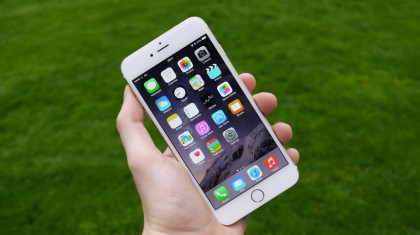
The weight difference is obvious – the iPhone 6 Plus has a premium metal body while those other two handsets sport plastic finishes – and to be fair it doesn't feel overly demanding in the hand in this respect.
Where things start to fall apart a little for the iPhone 6 Plus is its width and height, which could be the sticking point for some prospective buyers.
iPhones have historically been the smartphone you can depend on to fit nicely into both your hand, and the pocket of your tightest jeans.
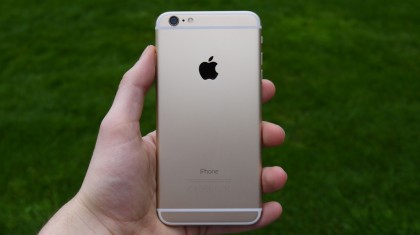
At just 7.1mm thick, the 6 Plus is almost impossibly thin, making a slide into a jeans pocket easy – you may find it peeking out the top, but that's still one attribute ticked off.
Slide it out and hold it in one hand, though, and it's less inviting. I've been using the Moto X Play recently, so my hands have learned to live with a large smartphone, but I still found the iPhone 6 Plus tricky to hold on to.
The sizeable bezels above and below the screen provide additional height, and while the extra width may only be minimal compared to its rivals it's noticeable in the palm, with the 6 Plus stretching your fingers.
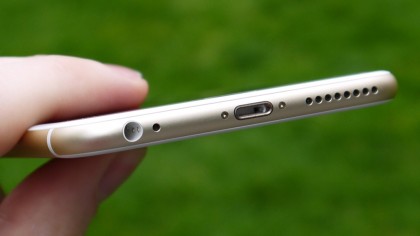
It's a very attractive looking handset; line it up alongside the competition and the iPhone 6 Plus is easily one of the best-looking phablets available, rivaled only by the newer iPhone 7, the short-lived Samsung Galaxy Note 7 and Google Pixel XL.
I had the pleasure of using the gold version during the review, and while it's my least favourite of the three colour options Apple offers (space grey and silver being the other two), I still found it a pleasing device to look at, touch and play with.
There's no doubting that the iPhone 6 Plus is a premium device, oozing class and style – and so it should, considering its lofty price tag.
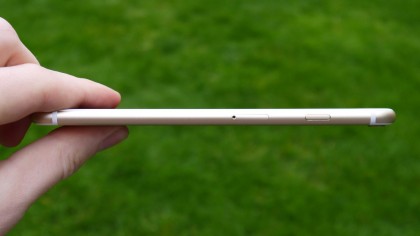
The smooth, flat, brushed metal rear of the 6 Plus offers little in the way of grip and, while it sports a surprisingly slender profile, the fact it isn't bulbous on its rear means it doesn't fit as snugly into the palm as the LG G4.
That lack of grip can be a little troublesome, as you'll find yourself doing a fair bit of shuffling during one-handed operation as you move around different areas of the screen and aim to tackle the physical keys located on the sides and front of the 6 Plus.
The separated volume keys and rocker switch remain on the left side of the device, mirroring previous iPhone iterations, while the power key has been moved from its traditional position at the top to the side of the iPhone 6 Plus.
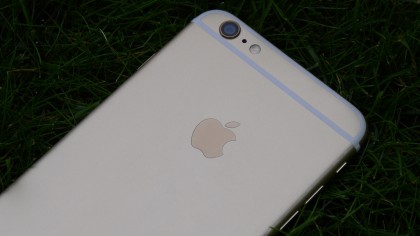
This makes a lot of sense, as it would be almost impossible to hit if it were located on top, and it's a location we see the majority of supersized handsets employ these days.
The power/lock key could do with being moved down the side of the 6 Plus a little, making it easier to reach. Sony has the right idea with a centrally located key, as it falls nicely under your thumb/finger depending on which hand you're holding it in.
It's a minor point, but if Apple swapped the location of the nanoSIM tray and power/lock key around the iPhone 6 Plus would be easier to use.
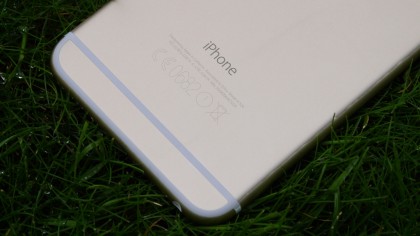
One blip in the smooth curves of the iPhone 6 Plus is the protruding rear 8MP camera. This isn't much of an issue though, and while I feared it would make it more exposed to damage during my review I saw no evidence of any wear and tear.
It is, after all, protected by sapphire crystal glass, making it super tough, so you shouldn't have any issues with breakages here.
There were rumours in the lead-up to their announcement that the iPhone 6 and 6 Plus would come with dust- and water-resistant qualities. Sadly this isn't the case – not a huge loss by any means, but it would have been a nice additional touch. However, if you're looking for an iPhone with these durable qualities, direct your attention to the iPhone 7.
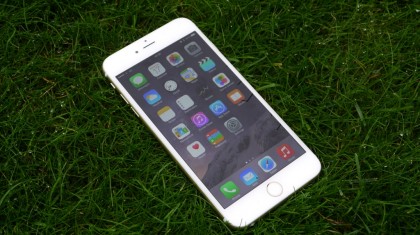
The top edge of the 6 Plus is an uninterrupted curve of gold metal, while on the base you'll find the 3.5mm headphone jack, microphone hole, lightning port and speaker grille.
I found the speaker wasn't located in the best position, with my hand sometimes covering it when I was playing games or watching movies in landscape orientation. The front-facing speaker setups on the HTC One M9 and Sony Xperia Z3 are far better placed.
While it is just about possible to use the iPhone 6 Plus one handed, I found that most of the time I was employing both hands to ensure a firm grip and stable typing platform.
As far as phablets go the iPhone 6 Plus is in the same boat as the rest of them: many will find it simply too big to be practical, while those longing for a supersized iPhone will be over the moon with its sleek, premium chassis and elegant curves.

TechRadar's former Global Managing Editor, John has been a technology journalist for more than a decade, and over the years has built up a vast knowledge of the tech industry. He’s interviewed CEOs from some of the world’s biggest tech firms, visited their HQs, and appeared on live TV and radio, including Sky News, BBC News, BBC World News, Al Jazeera, LBC, and BBC Radio 4.
